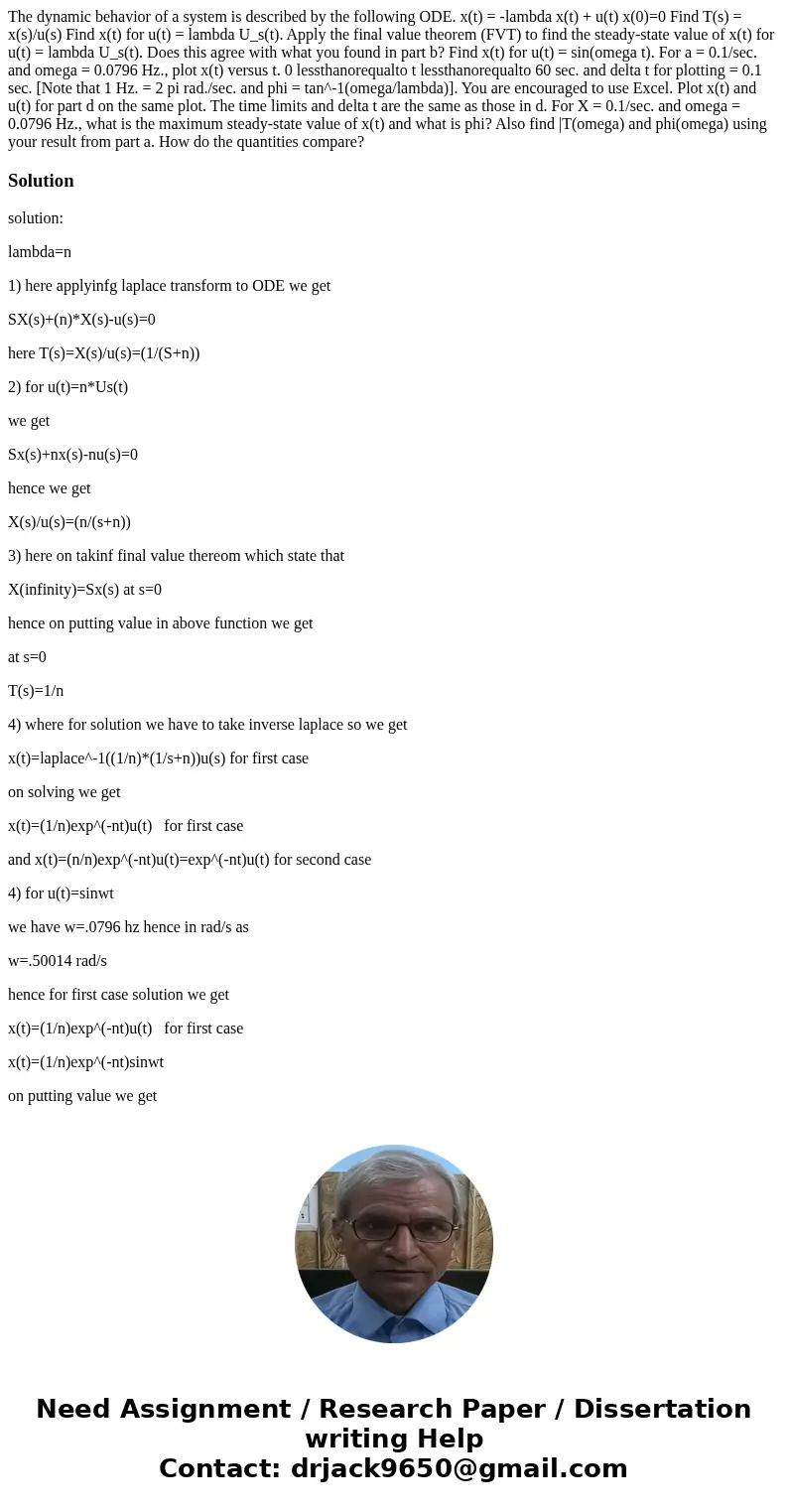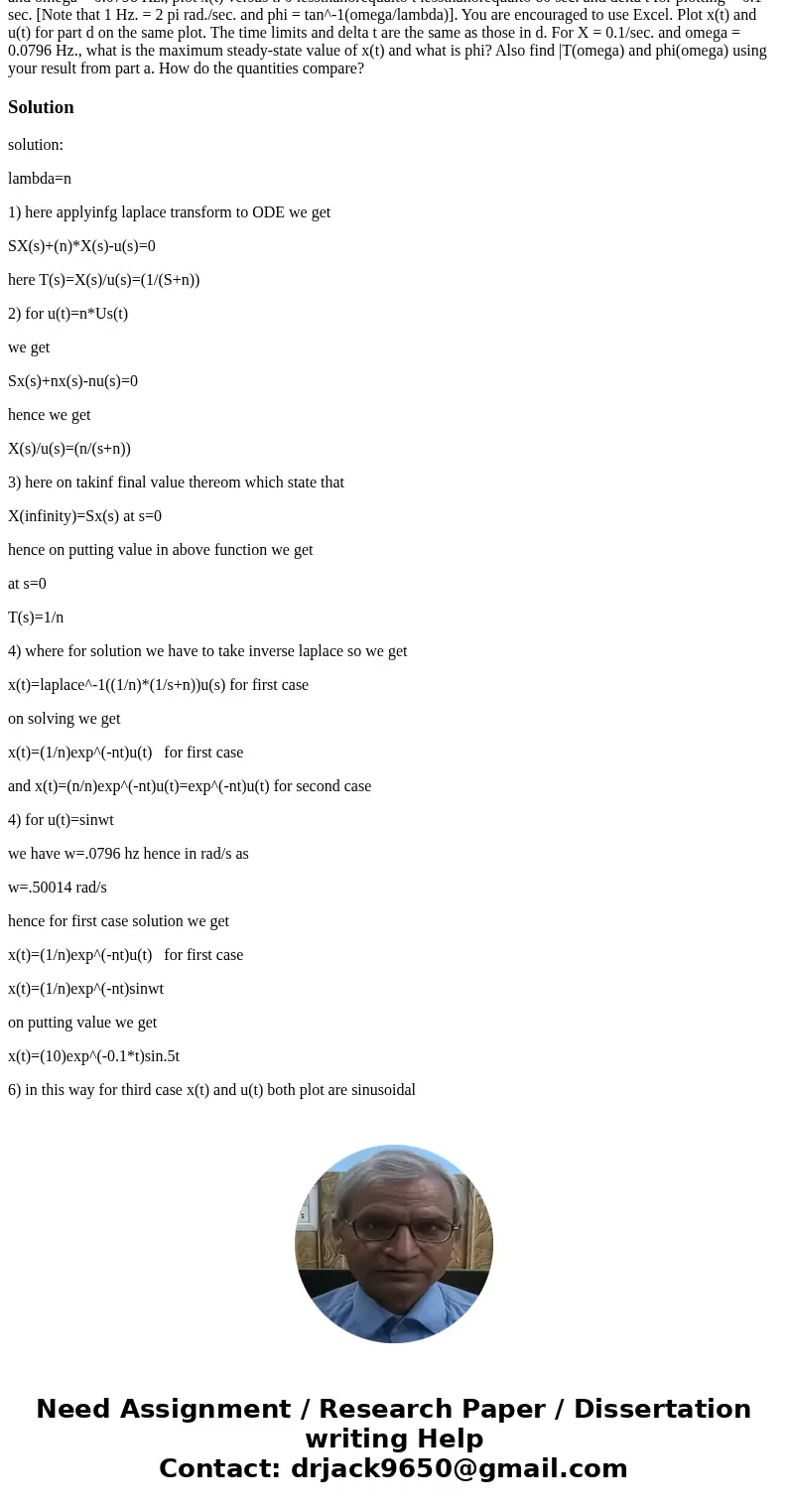The dynamic behavior of a system is described by the followi
Solution
solution:
lambda=n
1) here applyinfg laplace transform to ODE we get
SX(s)+(n)*X(s)-u(s)=0
here T(s)=X(s)/u(s)=(1/(S+n))
2) for u(t)=n*Us(t)
we get
Sx(s)+nx(s)-nu(s)=0
hence we get
X(s)/u(s)=(n/(s+n))
3) here on takinf final value thereom which state that
X(infinity)=Sx(s) at s=0
hence on putting value in above function we get
at s=0
T(s)=1/n
4) where for solution we have to take inverse laplace so we get
x(t)=laplace^-1((1/n)*(1/s+n))u(s) for first case
on solving we get
x(t)=(1/n)exp^(-nt)u(t) for first case
and x(t)=(n/n)exp^(-nt)u(t)=exp^(-nt)u(t) for second case
4) for u(t)=sinwt
we have w=.0796 hz hence in rad/s as
w=.50014 rad/s
hence for first case solution we get
x(t)=(1/n)exp^(-nt)u(t) for first case
x(t)=(1/n)exp^(-nt)sinwt
on putting value we get
x(t)=(10)exp^(-0.1*t)sin.5t
6) in this way for third case x(t) and u(t) both plot are sinusoidal


 Homework Sourse
Homework Sourse